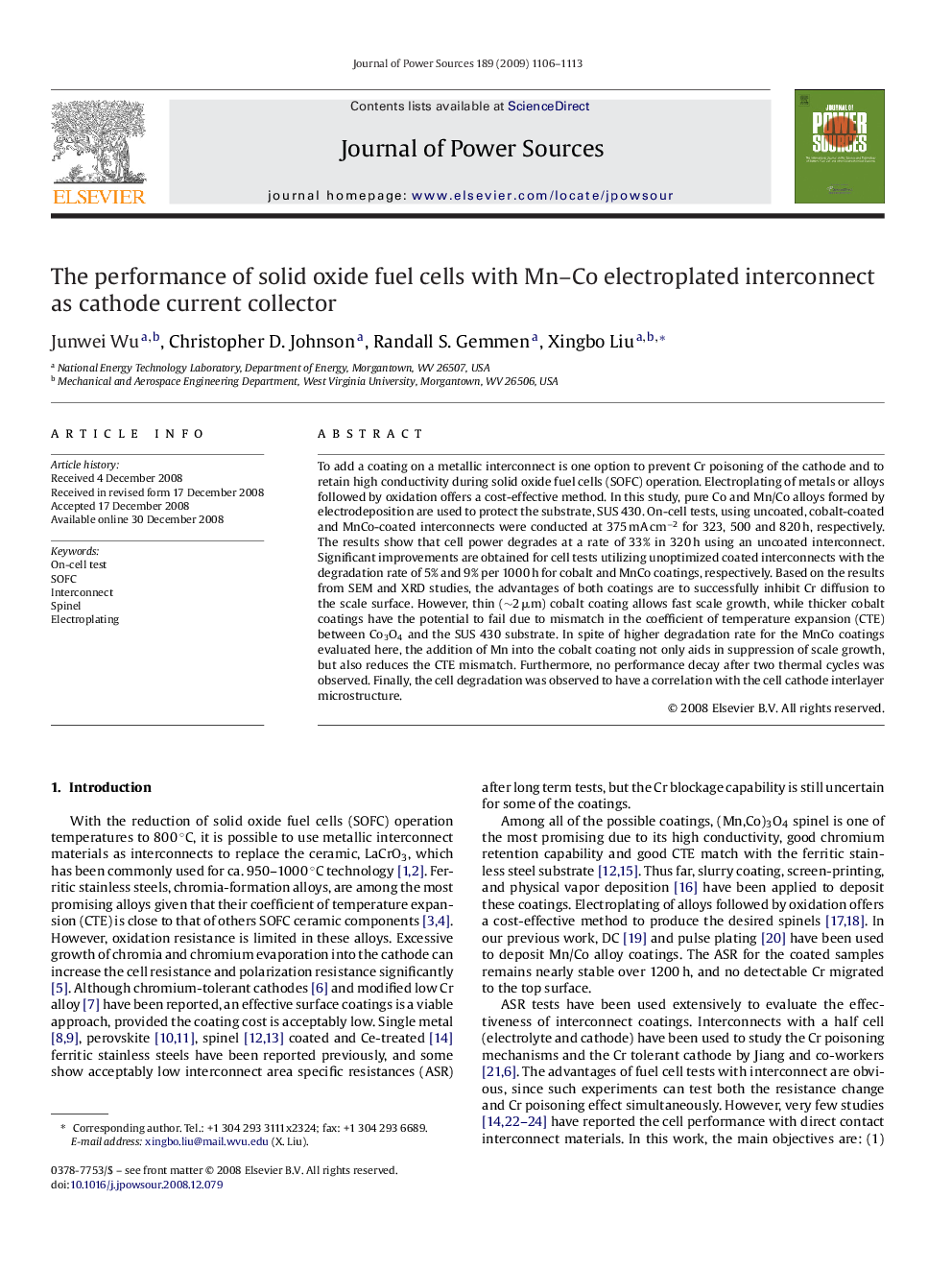| Article ID | Journal | Published Year | Pages | File Type |
|---|---|---|---|---|
| 1289989 | Journal of Power Sources | 2009 | 8 Pages |
To add a coating on a metallic interconnect is one option to prevent Cr poisoning of the cathode and to retain high conductivity during solid oxide fuel cells (SOFC) operation. Electroplating of metals or alloys followed by oxidation offers a cost-effective method. In this study, pure Co and Mn/Co alloys formed by electrodeposition are used to protect the substrate, SUS 430. On-cell tests, using uncoated, cobalt-coated and MnCo-coated interconnects were conducted at 375 mA cm−2 for 323, 500 and 820 h, respectively. The results show that cell power degrades at a rate of 33% in 320 h using an uncoated interconnect. Significant improvements are obtained for cell tests utilizing unoptimized coated interconnects with the degradation rate of 5% and 9% per 1000 h for cobalt and MnCo coatings, respectively. Based on the results from SEM and XRD studies, the advantages of both coatings are to successfully inhibit Cr diffusion to the scale surface. However, thin (∼2 μm) cobalt coating allows fast scale growth, while thicker cobalt coatings have the potential to fail due to mismatch in the coefficient of temperature expansion (CTE) between Co3O4 and the SUS 430 substrate. In spite of higher degradation rate for the MnCo coatings evaluated here, the addition of Mn into the cobalt coating not only aids in suppression of scale growth, but also reduces the CTE mismatch. Furthermore, no performance decay after two thermal cycles was observed. Finally, the cell degradation was observed to have a correlation with the cell cathode interlayer microstructure.
